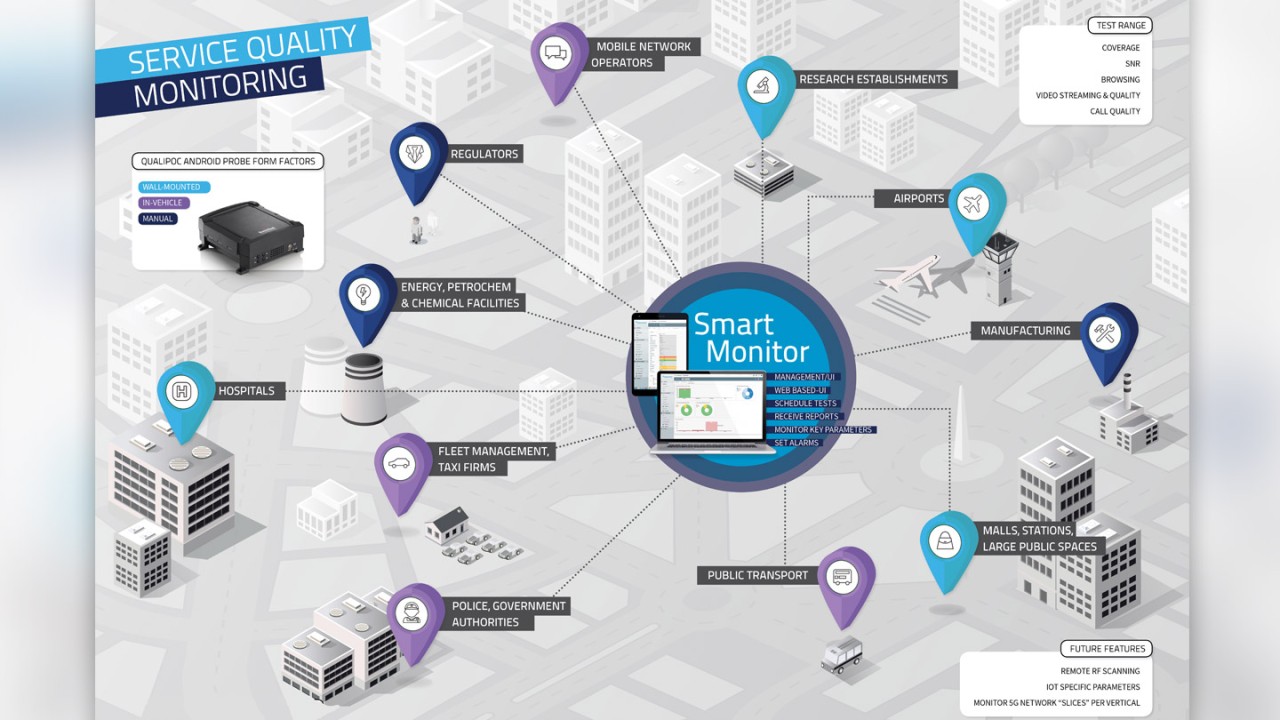Written by Jeremy Carpenter | June 8, 2017


Examining the new applications that will be supported by these use cases as we move from 4G to 5G, namely transport, healthcare, energy, agriculture, aviation, education, automotive, and public safety, it is apparent that there is a shift in end-user emphasis from subscriber to enterprise and government organizations. This shift brings with it new opportunities to operators for revenue generation but also new demands for high-quality, high-availability services and, of course, the required network performance to support their delivery.
Operators that can provide the network performance to support 5G use cases and ensure their sustained operation 24/7 will be able to access the new industry verticals, but this will come with increased expectations. Here, real-time monitoring of network performance becomes essential to:
1. verify that the quality of service (QoS) delivered to the end user or machine is in accordance with the required level
2. provide awareness of network operation issues before they become critical.
Monitoring network performance
Service quality monitoring enables an operator or organization to monitor network performance remotely at specific locations by deploying fixed or mobile probes in the RAN. This allows insight to network coverage and connectivity as well as performance metrics, such as throughput and latency, and the service-specific measurement of voice, video, and data.
One example is our QualiPoc Android Probe, a standard smartphone equipped with test agent software that can be deployed in fixed or mobile mode, either in a shell on a wall, or within a vehicle, to give a user-centric view of network performance and of the services being delivered over that network. The SmartMonitor management software can remotely manage multiple probes and schedule tests, giving high-level feedback in real time.
As shown in the diagram above, each application will have its own combination of network requirements in terms of throughput, availability, mobility, Quality of Service, and latency. For example, ensuring the connectivity of emergency services at an airport has very demanding requirements for the availability and delivery of high-quality streaming video. A service quality monitoring system consisting of probes at the airport connected to a central monitoring center with defined throughput, video quality (VMOS), and availability thresholds would allow continuous monitoring of the connectivity of critical staff and vehicles.
Immediate visibility of network performance issues
Looking at 5G use cases such as URLLC, which promises to support emerging critical applications such as industrial internet, smart grids, infrastructure protection, remote surgery, and intelligent transportation systems (ITSs), it is apparent that the consequences of network failures become far more severe than a dropped call or being unable to watch YouTube on your smartphone. In such circumstances, service quality monitoring will have an important role to provide immediate visibility of network performance issues, trigger alarms when a critical situation arises, and compile reports for further analysis.
In summary, the emergence of 5G will open up new enterprise and government markets for operators able to provide network services that are, in many cases, business and safety-critical. Conversely, it will also place a range of new demands on the performance of the network – from high densities and near-zero latencies and 100% availability. For companies and organizations that use 5G applications for the operation of their business, ensuring a robust wireless connection will be critical, and service quality monitoring places the awareness of the network they rely on in their hands.






